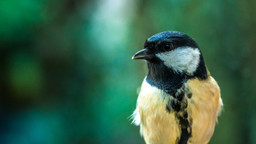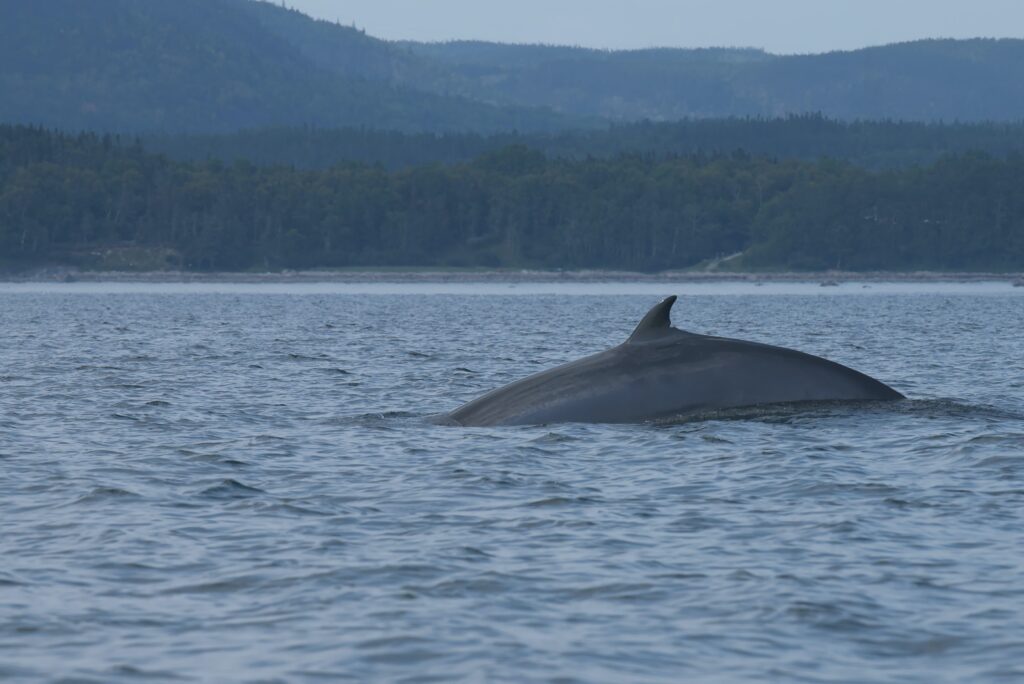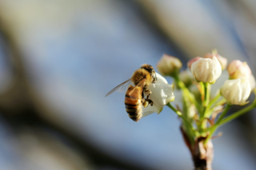
Noise pollution and its impact on wildlife and ecosystem health
Noise pollution created by humans is not only a massive problem for people but for the other creatures around us, and for the natural ecosystems upon which so much depends.
The impacts of chronic noise exposure on terrestrial and marine organisms has been well documented, and are wide-ranging and disastrous, affecting a huge variety of creatures in worrying and profound ways.
These effects on wildlife, and their broader knock-on effects on ecosystem health in general, are becoming better understood. By looking at this problem in more depth, these extensive consequences become ever more apparent, and the clearer it becomes that noise pollution can be just as much of a threat to the natural world as other forms of pollution.
The impact of noise pollution on animal physiology
Scientists have shown that noise pollution impacts animal physiology in a range of different ways. Most researchers agree that noise can affect animals’ physiology and behavior; if it causes chronic stress, noise can be injurious to an animal’s energy budget, reproductive success, and long-term survival.
This review articulates the effects of noise on the neurogenic system, reproduction and development, metabolic activity, cardiovascular systems, cognition and sleep, hearing, the immune system and immune response, DNA integrity, and gene expression.
Anthropophony (or anthrophony; human noise) can interfere with biophonic processes – animals’ generation of sound for communication, including to defend territory or attract mates – and lead to physiological changes: increased production of stress hormones, impairment of cognition, reduction of immune function, and even damage to DNA.
Numerous specific examples can be given. For example, a 2021 study provided the first evidence of noise-induced physiological stress and behavioral disturbance in larval zebrafish, showing that both noise amplitude and timing negatively impact key stages in early development.
This study summarizes findings about both marine and freshwater invertebrates, fish, turtles, mammals, and seabirds. It examines how acoustic pollution can affect hearing and the integrity of the auditory system, how extreme noise can cause mechanical stress and barotrauma (injury from air-pressure changes), and how noise disturbances can elicit detrimental stress responses – resulting, in some cases, in reproductive impacts or death.

These results underline the variety of responses expected in the 200,000-plus known marine species, while identifying striking inter-species commonalities in some of the physiological effects of noise.
Potential effects of noise pollution on humans and animals in both air and water vary according to sound level, duration, spectrum, temporal pattern, and distance from the source. Exposure to the most intense sounds close to the source can cause physical damage to the auditory system and rupture organs or blood vessels. The behavioral or physiological consequences for individual animals to more moderate sounds at larger distances (in yellow and orange) may seem less dramatic, but are more widespread and affect many more species and individual animals.
The impact of noise pollution on animal communication
Many studies have shown specifically how noise pollution is impacting animal communication, influencing how animals communicate with one another, and how effectively they can do so.
In a 2020 study, researchers analyzed data from 31 animal species, such as frogs and birds, gathered from 23 experimental studies that exposed animals to man-made noise. Each animal’s response was compared to a baseline level, often the natural background noise level in an individual’s habitat.
Findings showed that man-made noise could change the outcomes of fights, since larger individuals producing low-frequency calls may increase call frequency in response to noise. In consequence, other individuals are unable to correctly assess their size and, thus, their fighting ability.
A number of studies in this area have focused on the impact of anthropophony on bird species, which may be particularly sensitive to noise pollution, given their reliance on acoustic signals for intraspecific communication.
Many birds alter their songs in noisy environments; for example, great tits have been shown to use higher frequency sounds in their songs when living in such circumstances. More recent studies have also shown that birds in noisy urban environments use shorter songs but repeat them more rapidly.

Birds may also simply sing louder in noisy environments, according to the Lombard Effect: the involuntary tendency of speakers to increase their vocal effort when speaking amid noise. With noise pollution in a soundscape, this reflex has been noted in animal species, such as, among others, birds, whales, and monkeys, as well as in humans.
The impact of noise pollution on animal reproduction
Through the physiological damage it can cause, and/or by hampering communication at key times and at key stages of animals’ life cycles, noise pollution has also been shown to impact upon animal reproduction. For example, western bluebirds that nest in proximity to oil and gas noises hatch fewer chicks than those which nest in quiet areas.
Though another study did not replicate these impacts for western bluebirds, it did find that, due to higher rates of abandonment at the incubation stage, the nests of the ash-throated flycatcher (Myiarchus cinerascens) which are exposed to noise had lower reproductive success than quiet nests. These results match other recent research demonstrating that ash-throated flycatchers avoid energy-sector noise in their nest placement and, when they do nest in noisy areas, experience stress hormone dysregulation and fitness costs.
A 2020 study additionally showed that birds living in forests tend to be more sensitive to noise than birds in open environments, and that noise pollution delayed nesting for birds whose songs are at a lower frequency and thus have more difficulty hearing through low-frequency human noise.
Traffic noise has also been found to affect communication behavior in a breeding tree frog (Hyla arborea), and to be detrimental to breeding success or survival. This is just another example of animals whose reproductive success and breeding stage are impacted by noise pollution across a range of different environments.
The impact of noise pollution on animal movement and migration
Noise pollution can also have a profound impact on the movements of migratory species, including birds – either by altering their migration patterns, or causing them to be less successful during their migrations.
Migration is an energetically stressful time, when individuals need to maximize their foraging and resting times during brief feeding stopovers, while also avoiding predators.

In fixed breeding territories, some bird species can partially overcome road noises by shifting the frequencies of their calls; some breeding frog species do likewise. But for actively migrating birds, options are limited: aural cues, such as vehicle sounds, cannot be ignored because they could mask the sound of an approaching predator. Hence, continuous or unpredictable road noises might force stressed-out migrating birds to spend more time being vigilant and less time foraging, thereby increasing their risk of starvation.
Scientists set up a ‘phantom road’ to directly test the effect of noise alone on a songbird community during autumn migration. Thirty-one percent of the bird community avoided the phantom road. For individuals that stayed in the vicinity, despite the noise, overall body condition decreased on the Body Condition Scoring scale, and some species showed a change in their ability to increase body condition when exposed to traffic noise during a migratory stopover.
The notion that road noises can disrupt the foraging behavior of birds was bolstered by a laboratory experiment on white-crowned sparrows, one of the more common migrators that suffered decreased body condition near the phantom road. In the laboratory, birds exposed to increasingly intense road noises (55 and 61 decibels) spent progressively more time being vigilant (raising their heads and looking around) and less time feeding than did birds without road noise (32 dB).
Sensitive marine species, such as echolocating cetaceans and migratory fish, may also avoid noisy regions, such as high-volume shipping lanes or areas where naval vessels regularly pierce the oceans with high-intensity sonar, or be impacted by ocean noise during migration periods.
Whales are also impacted by ocean noise during migration. Research has shown that our noisy oceans are interfering with their communication and slowing them down. Increased background noise leads to a reduced communication range; it has been estimated that minke whales lose around 80 percent of their range. This can decrease from more than 100 kilometers to less than 20 kilometers when the background noise increases from 67.5 dB to 87.5 dB. Communication ability affects the whales’ capacity to undertake long-distance migration.

The impact of noise pollution on wildlife biodiversity
As well as looking at the impacts of noise pollution on individual species, it is important to understand how noise pollution can have a detrimental effect on overall wildlife biodiversity (on both the numbers of individual species and species richness).
It is clear from scientific evidence that biodiversity is detrimentally impacted by noise pollution in a range of settings.
Many (at least 55) marine species have been shown to be impacted by ocean noise pollution to some degree. Thus, overall marine biodiversity is likely compromised by undersea anthropogenic noise.
Most marine animals, particularly marine mammals and fish, are very sensitive to sound. Noise can travel long distances underwater, blanketing large areas, and potentially preventing marine animals from hearing their prey or predators, finding their way, or connecting with mates, group members, or their young.
Decreased species diversity in whales and dolphins has been related to an increase in seismic noise. Naval sonar has killed individuals and perhaps even genetically isolated local populations of whales. Whales have also moved from their feeding and breeding grounds, shown stress, and foraged less efficiently due to noise. Noise has even been thought to contribute to several whale species’ population declines or lack of recovery.
In addition, noise has deafened fish, produced dramatically reduced catch rates, caused stress responses, and interfered with fish communication, schooling, and possibly the selection of suitable habitat. Invertebrates such as lobster, crab, and shrimp, also show noise impacts.
Climate change can worsen noise pollution in the ocean worse: melting sea ice opens up previously inaccessible regions to shipping, drilling, and other human activities. What is more, research also shows that climate change and other human pressures have led to the deterioration of habitats such as coral reefs, seagrass meadows, and seagrass beds, silencing characteristic sounds that guide fish larvae and other animals to their habitats.
Of course, noise pollution’s impacts on biodiversity are not restricted to our oceans. Increasing noise pollution in and around cities and other sites has also been shown to have a detrimental effect on overall terrestrial biodiversity.
A meta-study by Queen’s University, Belfast found that noise pollution is threatening the survival of more than 100 different species (both terrestrial and marine).
Though biodiversity loss occurs for a wide range of reasons, and though biodiversity degradation can take many forms and have many causes, it is increasingly clear that through noise pollution, we are contributing to the dramatic period of mass extinction and species loss currently being experienced around the world.
The impact of noise pollution on plants and broader ecosystem health
It is crucial, when assessing the impacts of noise pollution, to look at its consequences for individual species and on species numbers. But it is also very important to move beyond this to look at how noise pollution is influencing ecosystems as a whole.
Every change or adaptation within a species, and every loss of or damage to a population has knock-on effects within an ecosystem. This problem therefore needs to be assessed holistically, and be understood in terms of the ways in which organisms and systems are connected.
Expansion of transportation networks, urbanized areas, and industry have created evolutionarily novel acoustic conditions across every ecosystem on Earth. In other words, human noise pollution has altered ecosystems, impacting them in a range of different ways.
Studies suggest that noise pollution not only affects acoustically oriented animals, but that noise may reverberate through biological communities, via indirect effects, even to those with no clear links to the acoustic realm, and even in adjacent quiet environments.
The problem for conservation ecologists and other scientists is trying to work out all the indirect consequences of noise pollution, and their precise result for broader ecosystems.

One issue that makes this a challenge is that animals are often exposed to multiple noisy activities at the same time or in sequence, potentially in parallel with other disturbing factors such as changes in temperature or salinity, drought, or the effects of invasive species.
What is more, impacts cannot be looked at by analyzing the effects on a specific species alone, since noise impacting on even one creature within an ecosystem can have knock-on effects throughout an entire ecosystem – on other animals, and on plants and other organisms.
Noise even has a lasting effect on trees and plants, researchers recently found. A study by scientists at California Polytechnic State University, the first to have explored the long-term effects of noise on plant communities, revealed that human noise pollution affects the diversity of plant life in an ecosystem even after the noise has been removed.
These results add to the limited evidence that noise has cascading ecological effects. Moreover, worryingly, they suggest that these effects may be long-lasting, and that noise removal may not lead to immediate recovery.
Investigating the cumulative effects of different stressors and complex systems analysis will be critical for our understanding of the ecological consequences of noise pollution, and to develop efficient measures for potential mitigation.
We must treat noise pollution as an integral part of the worldwide threat of human-induced climate change. And view it with the understanding that everything is connected, and any small change within an ecosystem can impact the whole.
Earth.fm is a completely free streaming service of 1000+ nature sounds from around the world, offering natural soundscapes and guided meditations for people who wish to listen to nature, relax, and become more connected. Launched in 2022, Earth.fm is a non-profit and a 1% for the Planet Environmental Partner.
Check out our recordings of nature ambience from sound recordists and artists spanning the globe, our thematic playlists of immersive soundscapes and our Wind Is the Original Radio podcast.
You can join the Earth.fm family by signing up for our newsletter of weekly inspiration for your precious ears, or become a member to enjoy the extra Earth.fm features and goodies and support us on our mission.
Subscription fees contribute to growing our library of authentic nature sounds, research into topics like noise pollution and the connection between nature and mental wellbeing, as well as funding grants that support emerging nature sound recordists from underprivileged communities.
